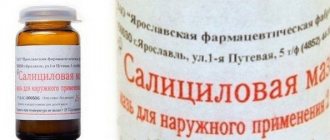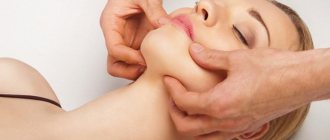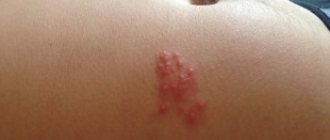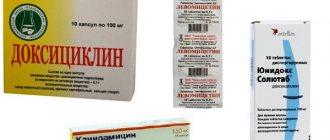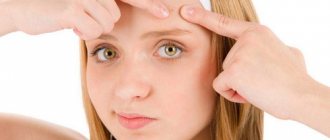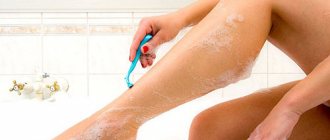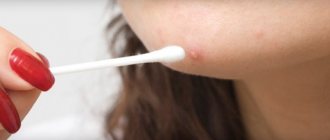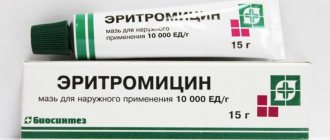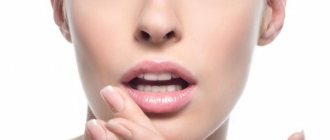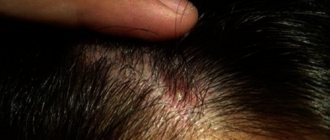What is a pimple
Our skin is the first to take on all the impacts of the external environment. In this regard, nature has come up with a kind of safety mechanism - the sebaceous glands.
They secrete a fatty secretion that forms a protective barrier, provides elasticity and hydration, and is involved in thermoregulation. The glands are located around the hair follicle, since another of their tasks is to create a lubricant for the hair as it grows.
The highest activity of the sebaceous glands lasts from the beginning of puberty until the age of 25. Adults produce approximately 20 g of sebum per day.
But if this secretion becomes very thick, there is more of it than necessary, the mouth of the follicle is filled with dust or cosmetics, then the gland becomes clogged and inflamed. This is how acne appears.
Don't eat fast food
Such products have a negative impact on the condition of not only the skin, but also the entire body as a whole. They contain large amounts of carcinogens and fats.
When exposed to them, hormonal levels and the functioning of the sebaceous glands are disrupted, which causes the formation of acne.
The condition of your facial skin is of no small importance. If there is a large amount of acne, a person feels insecure and uncomfortable. The use of the above methods will significantly reduce the risk of their occurrence. But if acne occurs in large quantities and does not go away if you follow the recommendations, you should consult a doctor.
Types of rashes
- A pimple with a black dot inside and a white, hard core is called an open comedon. It forms when sebum reaches the surface, where it collects dirt, oxidizes and darkens.
- Sometimes this process occurs deeper, causing a wen to form in the duct.
These comedones, as a rule, do not become inflamed and are the primary manifestations of acne. But if no action is taken, subcutaneous fat continues to accumulate, creating favorable conditions for the proliferation of microbes, which causes tissue inflammation, suppuration and pain.
About 70% of teenagers and young adults under 24 suffer from some form of acne. Of these, a third are forced to undergo serious treatment.
- Reddish or pink nodules without contents are called papules.
- Pimples with a white head - pustules - appear under the skin when the wall of the hair follicle bursts and the accumulated pus comes out under the stratum corneum or out. Whiteheads are removed by puncture with a sterile needle, after which the wound is lubricated with alcohol and iodine (if there is blood).
- Painful lumps located in the deep layers of the skin are caused by chronic inflammation of the sebaceous glands. Such acne is accompanied by bluish spots and in advanced cases can unite into a continuous painful area. You cannot remove them yourself, as this will leave dark spots and deep scars on the skin.
- The most severe form of acne is considered to be fulminant acne, which not only affects large areas of the skin, but is accompanied by impaired heat transfer and an increase in body temperature, pain in muscles and bones, and changes in the composition of leukocytes. In this case, immediate consultation with a doctor and serious treatment is required.
- Carbuncles
are purulent inflammations on the face, back, lower back, buttocks and back of the neck, caused by squeezing out pimples and introducing microorganisms into the wound. First, a painful reddish nodule appears, which later becomes purple, hot, swollen, and becomes covered with ulcers that break out in several places. After this, the surface of the carbuncle turns black and becomes covered with ulcers. In the necrosis stage, tissues die to a great depth, leaving large ulcers and scars. It is removed surgically. - A boil
is also a pus-filled formation on the skin caused by bacteria. It forms around the hair follicle as a small, dense redness. It gradually expands and deepens, causing swelling of surrounding tissues and severe pain. In the ripening stage, it is a shiny, cone-shaped pimple of large diameter, filled with pus, blood and necrotic fluid. After a breakthrough or artificial opening, it leaves a crater, which then scars and becomes faintly noticeable. A boil most often occurs on the forearms, lower back, abdomen, buttocks (we recommend reading our article about), legs, but can form anywhere where hair grows.
How does a pimple appear?
Let us explain the phases of formation using the example of a closed comedon.
Clogged pores
In normal condition, the oily secretion freely comes to the surface of the skin. For a number of reasons, both hygienic and hormonal, a “plug” forms in the pore, preventing the sebum from moving. This leads to local inflammation on the skin.
Excessive secretion of sebaceous secretion causes the skin to become oilier, and dirt, dust and germs stick to it more easily. All this forgets the time even more, hardens and is very difficult to clean.
Ripening
The time is filled with various foreign particles, plus bacteria, for which such a habitat turns out to be simply ideal for life. At the same time, the sebaceous gland continues to work as before, but there is no outlet for the secretion.
Bacteria, taking advantage of this, feed on sebum, turning it into pus, and multiply safely. As a result, a tubercle begins to grow under the skin. It becomes red and painful as the skin is stretched to its limit. The pimple that has formed grows and fills with white contents.
Breakthrough
There are two exits for the formed pus - inside under the skin and outside. If a pimple breaks out under the skin, it threatens the appearance of even more pus, which will not be able to get to the top.
Do not try to squeeze out such a formation yourself, you can only make it worse and even risk getting blood poisoning. Contact a dermatologist or cosmetologist, they will open the clogged pore and allow the fluid to escape.
A breakthrough of pus occurs when the resulting tubercle stretches the skin to the point that it bursts and the fluid flows out freely.
Spreading
During adolescence, it is impossible to avoid the spread of acne. They may be isolated or appear in droves, but this is inevitable. You will have to wait for the body to adjust its hormonal levels.
In adults, a random pimple will remain the only one if you do not try to remove it immediately. There are millions of bacteria on the hands and, if they get on the inflamed area, they can cause injury, the spread of rashes, and the formation of boils and carbuncles.
Fungi, mites, acne bacteria, Staphylococcus epidermidis and many other microorganisms live in the mouths of the glands and on the skin. They are not dangerous under normal conditions, but when exposed to favorable conditions, they begin to multiply en masse and cause inflammation on the skin.
Folk remedies
You can use natural folk remedies at home. It is important to first check for the absence of an allergic reaction to natural components.
The effect on the body can be external and internal. In the first case, masks and tonics are used. For prevention, it is recommended to take cleansing infusions.
- A decoction of nettles (a tablespoon per glass of water) is considered beneficial. You need to drink 1/2 glass three times a day for a month.
- Yeast (7–10 g) is used on an empty stomach. It is also recommended to drink 200 ml twice a day of a decoction of sage, nettle and birch (pour a tablespoon of each herb into 600 ml of water).
- Masks and tonics are effective in combating and preventing rashes. A soda composition is used to cleanse and tighten pores. It is prepared by diluting baking soda with water until it turns into a paste. The mask is applied to the skin for 15 minutes, after which it is washed off with water.
- You can cleanse the skin with a chamomile composition (a teaspoon diluted with water). The mask must be kept on for several minutes, then rinsed off with water.
- A toner with apple cider vinegar (200 ml of water and a teaspoon of vinegar) is suitable for any skin type. You need to wipe your skin with lotion twice a day.
It is recommended to apply medicinal compositions based on folk recipes
To avoid breakouts, you need to follow some important rules.
- It is not recommended to press your face against the pillow while sleeping.
- During the day, it is necessary to wash off sweat from the face to prevent rashes.
- Scrubs and peelings are used in the absence of rashes. It is important not to put pressure on the skin, acting gently and carefully.
- Do not squeeze pimples. In their place, scars and scars may remain.
If you follow simple rules, you can prevent the appearance of acne and pimples. Prevention is an important goal when fighting acne.
Hello! My name is Nadezhda, I am 26 years old. Just recently, when I woke up in the morning, I discovered strange lumps under the skin on my face, which were accompanied by pain. Having turned to a friend for advice, she advised me to look for an answer on the Internet. Based on all the symptoms, I realized that the lumps are ripening pimples that will soon appear on the surface of the skin.
Causes of acne
They can be internal, provoking the appearance of endogenous acne, and external - exogenous.
The first include:
- hormonal imbalance during adolescence and youth (we recommend reading an article about);
- increased testosterone levels;
- oily skin type;
- hyperkeratosis - thickening of the stratum corneum;
- seborrhea;
- infections and chronic diseases, especially of the gastrointestinal tract;
- accumulation of toxins in the body;
- allergic reactions to foods or medications;
- menstrual cycle;
- stress and depression;
- decreased immunity.
The sebaceous glands tend to intensively secrete fat when the level of androgens increases and reduce productivity if estrogens predominate.
The formation of a rash is only a secondary sign of a condition or illness in the body.
The localization of acne can indicate problems in the functioning of certain human organs. For example, a large number of pimples on the cheeks indicates a problem in the functioning of the intestines, on the chin - about disturbances in the functioning of the ovaries, on the forehead and in the temporal part of the face - indicates a pathology of the gallbladder and pancreas. may appear from sweat or allergies.
Why exogenous acne appears:
- blockage of the sebaceous glands and the mouths of the follicles with lubricants, oils and other comedogenic and toxic substances, work in dusty rooms;
- the habit of touching your face with your hands and contact with dirty objects (tweezers, telephone, etc.);
- excessive use of cosmetics;
- taking corticosteroids;
- stopping taking contraceptives;
- “wrong” food, coffee, sweets, amino acid deficiency;
- smoking and alcohol;
- increased physical activity with active sweating;
- uncomfortable, tight-fitting and synthetic clothing;
- change of climatic zones;
- hot and humid climate;
- large doses of ultraviolet radiation (for those who like to sunbathe in a solarium, we recommend reading the article about how a solarium helps);
- lack of sleep, lack of proper rest;
- self-squeezing pimples;
- excessive cleanliness, in particular, frequent washing of the face.
Cleansing the body
The skin releases toxins through the pores along with oil or sweat, which can cause pimples, pimples, or acne. You need to understand that it is preferable for the body that these substances are eliminated in one way or another, otherwise they can have a harmful effect on internal organs and provoke the appearance of a cyst or tumor.
We invite you to familiarize yourself with Acne from alcohol - on the face, photos, whether there can be any, causes, influence, how to get rid of it
1. prevent their penetration into the body
2. cleanse the body, and after it the skin from the inside
- Give preference to natural products, better prepared at home or unprocessed. Avoid processed and ready-made foods.
- Whenever possible, choose organic products.
- Wash fruits and vegetables well and peel them if they are not organic.
- Avoid any food additives.
- Don't mix many different foods at one meal.
- Treat all digestive problems (heartburn, bloating) in a timely manner.
- Eat slowly, chewing your food thoroughly.
- Avoid drinking alcohol and tobacco.
- Stay away from toxic substances (varnishes, paints, exhaust fumes).
- Add air purifying plants to your home.
- Use homemade or natural cosmetics that do not contain petroleum products or heavy metals.
Some foods stimulate the appearance of acne, and therefore it is better to exclude or limit their consumption:
- Milk and dairy products with a high fat content - cheeses, cream, ice cream.
- Red meat.
- Sausages and meat products, especially those with a high fat content.
- Milk chocolate (it is better to give preference to bitter or dark chocolate and cocoa).
- Trans fats, or hydrogenated fats, such as those found in margarine.
- Sauces.
- Roast.
It is important to understand that proper skin care will help it remove toxins through the pores, then they will not accumulate and, therefore, the appearance of acne can be avoided.
- Once a week, exfoliate according to your skin type, using natural products such as sugar, salt or soda.
- Once every 10-15 days, apply a clay mask to your face; it perfectly absorbs toxins from the skin and contains beneficial minerals and nutrients.
- Use natural moisturizers, including vegetable oils, and avoid artificial creams, especially those containing paraffin.
- To control sebum secretion, use rice paper and aloe vera.
- Don't touch pimples when they appear. It is better to apply tea tree oil to them spotwise and wait until they dry to avoid infection.
Stages of development
It is customary to distinguish four stages, depending on the form of acne:
- Lightweight and quick to treat. Single non-inflamed formations appear on the skin of the face or body.
- Moderate, treatment takes 6-8 weeks. Many comedones and one or two dozen papules with inflammation appear.
- Severe, requires special therapy. The number of inflamed pimples increases to 20-40 pieces.
- Extremely severe, requires serious specialized treatment. Deep large pimples, nodules, papules and pustules form on the skin in large numbers.
Pimples, or acne vulgaris (acne), develop against the background of seborrhea, that is, excessive secretion of sebum with altered properties. They occur in areas of the skin that are richest in sebaceous glands. On average, there are 900 glands per 1 cm2 of skin on the face, upper back and chest, while in other areas their number does not exceed 100.
The reasons that cause the formation of acne include not only excessive secretion of the sebaceous glands, but also hormonal imbalance, infection of the skin by bacteria, and pathology of the hair follicle (for example,). This condition is most often observed in adolescents, but adults also often face this problem. Acne is one of the most common skin diseases.
The peak incidence occurs between the ages of 13 and 18 years, and acne appears earlier in girls, but disappears faster. In young people, acne can take severe forms, causing significant cosmetic defects and worsening the quality of life, primarily due to psychological problems. In men, the pathology becomes chronic and by the age of 30-40 turns into late acne.
The first signs are increased sebum secretion (seborrhea) and microcomedones. You should consult a doctor already during this period to prevent the development of severe forms of the disease.
Proper nutrition is the key to healthy skin
A high level of fluid in the body will help keep the skin clean. Drinking plenty of water is good for the body. Excessive exercise causes moisture loss, which must be compensated.
A healthy diet has a beneficial effect on the skin. Eating right means looking great. A balanced diet high in fruits and vegetables will allow the body to cope with acne. Healthy eating gives a person energy. To improve the condition of the body, you need to take vitamins.
Vitamin A. Its main purpose is to remove excess fats from the body, which provoke the development of acne. To compensate for vitamin A deficiency, you need to eat carrots, fish oil, spinach and salmon.
Zinc. The lack of this element causes skin rashes. Zinc creates an unfavorable environment for the development of bacteria. To compensate for the deficiency of this element, you need to eat pumpkin seeds, wheat germ, turkey and peanuts.
Omega-3 fatty acids. Their main function is to normalize metabolism and reduce inflammation. They are found in seeds, almonds and salmon.
Fast food and junk food make the situation worse. You need to give up French fries, pizza, burgers, chips and other foods. Even regular milk can trigger the development of acne. It contains a large amount of hormones that lead to increased blood sugar levels. It is not necessary to completely eliminate dairy products; it is enough to reduce their consumption.
Bad habits are friends of problematic skin rashes. Tobacco and alcohol affect the occurrence of acne. Getting rid of these habits will not only eliminate inflammation, but also improve the condition of the body as a whole.
Exercising helps avoid stress, which causes acne. Nervous stress occurs in people of all ages. To improve your condition you need to exercise. Healthy sleep will help relieve stress. All of the above recommendations taken together will not only prevent acne, but also improve your health.
Facial acne is becoming a significant cosmetic problem for many people. The urgent question is not only about its elimination, but also about preventing the development of acne. Preventive measures will help prevent both the occurrence and progression of existing acne.
Main types of acne
Depending on the external manifestations, the following types of acne are distinguished:
- comedones;
- papular;
- pustular;
- inductive;
- abscessing, or suppurating indurative;
- phlegmonous;
- drain;
- conglobate.
The choice of treatment methods for inflammatory skin processes depends on their severity. In mild cases, home remedies are sufficient. With a large number of rashes, their deep and merging forms, the help of a dermatologist is necessary.
The formation of different types of acne occurs in stages. Initially, this is a blockage of the excretory ducts of the sebaceous glands due to increased secretion of sebum, caused by the hypersensitivity of cells to sex hormones. This creates a breeding ground for microorganisms, in particular Propionibacterium acnes. As they multiply, they break down fat to form fatty acids that damage the skin surface. As a result of chemical irritation, an inflammatory process is formed.
Video: 10 Types of Acne and What They Mean
Comedones
The most common type of acne, localized mainly on the face. They form in the hair follicle, which becomes clogged with dead skin cells and excess sebum. turn into small elevations (papules) with white or black dots in the center.
This type of acne can be caused by certain foods - rich in animal fat, fried, spicy, salty. They are called comedogenic.
"Black dots"
The black plugs on the surface of the papules that open onto the skin are filled with excess oil and skin cells. Their color is not due to the accumulation of dirt, but to improper reflection of light rays from clogged hair follicles, as well as changes in the color of sebum when exposed to air.
Sometimes the appearance of pathology is associated with improper use of cosmetics based on oils and moisturizing components. Pollution and high environmental humidity matter. Additionally, blackheads can appear due to excessive use of soaps and other cleansers. Dry skin leads to increased sebum production and clogged pores.
Open comedones often form on the forehead, chin, and nose. Over-the-counter acne medications are usually sufficient to treat them.
"White heads"
If the excretory duct of the sebaceous gland and hair follicle is completely blocked, pimples with white purulent heads appear - closed comedones. Their contents do not reach the surface of the skin, accumulating under its top layer and causing the formation of a bubble. Since sebum does not come into contact with air, it does not darken. Such acne can also be combated with the help of cosmetics.
Non-inflamed comedones are not accompanied by redness and swelling of the skin. They respond quite well to the use of salicylic acid. This substance exfoliates dead cells, opening the exit for excess sebum. Salicylic acid is included in special lotions, toners and moisturizers.
Pimples with white heads are less treatable. To eliminate them, in addition to salicylic acid, retinoids are used, in particular.
Papular
When inflamed, comedones turn into papular acne. The process is associated with the proliferation of pathogenic bacteria in the sebaceous glands, which cause inflammation and the formation of pus. Small, soft pink or red bumps form on the skin surface. The skin around them is often slightly hyperemic. These pimples may be sensitive to touch and may be slightly itchy. Squeezing out the contents intensifies the inflammatory process and subsequently leads to the formation of scars.
A large number of papules is a sign of moderate to severe acne and requires treatment by a dermatologist. Inflammatory acne is less treatable than comedones. To eliminate them, agents based on benzoyl peroxide, topical and oral antibiotics, and isotretinoin preparations are used.
Pustular
These are pustules, often developing from comedones with white heads. A red, inflamed rim appears around the lesion. The pathological formation itself is filled with white or yellow pus. It may have an irregular shape; pustular acne often merges with each other and protrudes above the surface of the skin. Typically, the appearance of pustular elements is not associated with severe bacterial infection.
You should avoid squeezing pimples, which causes dark spots (hyperpigmentation) or scarring on the skin.
Indurative or nodal
A type of subcutaneous pimples that look like large, painful bumps or nodules. They appear when the sebaceous gland duct is completely blocked, irritation and inflammation of the surrounding skin tissue.
These are dense formations to the touch. Acne penetrates deep into the skin structures and is often painful. When such formations appear, the help of a doctor is necessary. Usually, drug treatment with Isotretinoin preparations for internal use for six months is sufficient.
Abscessing
When indurative acne suppurates due to the proliferation of pathogenic bacteria, cystic formations are formed - abscessed acne. They are filled with purulent contents and resemble. The formations are painful, usually soft to the touch, and after their opening deep atrophic scars form.
The course of the disease is relapsing. The help of a dermatologist is necessary, and often consultation with other specialists is required, for example, an endocrinologist or immunologist. Isotretinoin is used for treatment. can be removed surgically.
Nodular and abscessed acne often appears with a hereditary predisposition. They can be observed simultaneously with comedones, occur with the progression of papular or pustular forms, and also combine into nodular abscess formations.
Phlegmonous
They appear when inflammation penetrates into the deep layers of the skin, resulting in the formation of tiny cavities filled with purulent contents. On the surface of the skin this is manifested by the appearance of widespread lumpiness. Gradually, the phlegmonous cavities merge into large foci, forming nodes of a red-violet hue.
Phlegmonous formations gradually break through and the purulent contents, often mixed with blood, come out through several holes. The course of the disease is long, it is very difficult to treat.
Conglobate
This is one of the most severe forms of acne. Conglobate acne often appears on the back, neck, chest, and buttocks. They represent many inflamed follicles that merge with neighboring areas of inflammation.
Such acne appears on the body of an adult, usually in men. They may be associated with the use of testosterone or anabolic steroids. Another name for them is fulminant. The onset of the disease can occur as arthritis, followed by profuse formation of acne throughout the body. For adequate treatment of the condition, it is necessary to consult a dermatologist.
Acne conglobata can accompany the genetic disease Klinefelter syndrome (trisomy XXY). In this case, they can occur on any part of the body above the knees. The pathology is accompanied by purulent damage to the joints and kidneys.
Degrees of severity and principles of treatment
What pimples and in what quantity are observed with different severity of acne:
- mild: less than 20 blackheads or white heads, less than 15 papules or pustules, and a total number of pimples of no more than 30;
- moderate severity: from 20 to 100 comedones, up to 50 inflamed pimples or the total number of lesions up to 125;
- severe: there are several abscessed blackheads of a dark red or purple hue.
How to deal with them?
For mild cases, it is enough to use special cosmetic lotions for 2 months. Moderate severity of the lesion requires medication. Treatment lasts several weeks, and often the severity of acne even increases in the first time after it begins.
In the severe stage, the main goal is to reduce inflammation and scarring. The doctor can prescribe a variety of medications and physical procedures that improve the appearance of the skin and the condition of the sebaceous glands.
Video: Acne remedies, review
Topical therapy is used to treat different types of acne. These are medications applied directly to the affected area - various. They contain substances such as benzoyl peroxide, resorcinol, salicylic acid, sulfur and zinc derivatives. Prescription medications, such as antibacterial creams and ointments with retinoids, are also used.
For systemic therapy, tablet medications are used. Antibiotics are prescribed - tetracycline, doxycycline, erythromycin. They destroy bacteria that cause inflammation and suppuration of acne. If necessary, the doctor prescribes other medications:
- oral contraceptives to normalize hormonal levels in women;
- spironolactone;
- antiandrogenic substances;
- isotretinoin (vitamin A derivative).
Isotretinoin preparations are very effective in the treatment of acne. However, due to a sufficient number of side effects and contraindications, they should only be prescribed by a doctor.
Lightning acne
This is a serious complication of ordinary inflammatory diseases. Against the background of a stable course of the disease, the temperature suddenly rises and signs of intoxication appear. Pustules appear on the skin of the entire body, with the exception of the head, quickly necrotizing with the formation of ulcers and subsequent scarring.
Acne fulminans most often affects adolescents 15-18 years of age with concomitant diseases of the digestive organs, such as colitis or Crohn's disease. It is assumed that irrational treatment of acne with antibiotics, retinoids, and hormones plays a certain role in their appearance.
Tropical acne
Appears mainly in young women after using sunscreen cosmetics and exposure to the sun or in a solarium. It is caused by the comedogenic effect of such cosmetics, associated with blockage of the excretory ducts of the sebaceous glands with oxidized cocoa, sea buckthorn, and coconut oils contained in it.
The face, neck, shoulders, and arms are affected. White-headed comedones, papules and pustules appear on the skin. The rash appears in summer and disappears in winter.
This type of acne is a complication of common acne in people with obsessive-compulsive disorder, more often in women. Having noticed a pimple, they immediately begin to squeeze it out, scratch it and damage the skin. As a result, a bacterial infection occurs, purulent elements appear, which heal with the formation of scars.
Acne caused by endocrine diseases
Part of the pathogenesis of acne is a disturbance in the metabolism of hormones, primarily sex hormones. Therefore, many diseases accompanied by hormonal imbalance are accompanied by different types of acne. These include:
- adrenogenital syndrome;
- polycystic ovary syndrome;
- adrenal tumor;
- Itsenko-Cushing syndrome;
- some pituitary tumors;
- diabetes mellitus and others.
Rare forms
- Keloid acne appears in young men who shave their heads. The reason lies in the damage to the hair follicles. If such a pathology occurs, you should stop washing the scalp with shampoo and begin treatment with benzoyl peroxide, glucocorticoids, and sometimes antibiotics.
- Many bacterial skin diseases are accompanied by acne. However, it is not acne vulgaris. In this case, the main complaints of the patient are other symptoms - itching, burning, redness.
- Incorrect treatment of acne with antibiotics can be complicated by gram-negative folliculitis. The disease manifests itself as a pustular rash resembling acne, as well as the formation of deep abscesses.
- Facial pyoderma is a severe form of acne that only affects women under 40 years of age. It is accompanied by the appearance of nodules and pustules on the face, which then open to form small ulcers followed by scarring. The disease begins suddenly, often in women who have never suffered from acne, and progresses quickly. Isotretinoin and systemic glucocorticoids are used in treatment.
Cosmetology procedures
There are several cosmetic procedures aimed at freeing the ducts of the sebaceous glands from accumulated secretions and dead epithelial scales:
- Cleansing facial skin in various ways.
- Mesotherapy. Its action is aimed at reducing oily skin and eliminating the effects of acne.
- Peeling - mechanical or acid - exfoliation of the upper layer of the epidermis.
- Ultrasound physiotherapy that accelerates cell regeneration.
- Darsonvalization. Pulsed high-frequency current and ultraviolet radiation have a bactericidal effect and normalize oily skin.
The basis of acne prevention is a responsible approach to your health. A balanced diet, exercise, regular examinations, proper hygiene and caring for your skin will help prevent such a nuisance as acne and avoid its unpleasant consequences.
What to do if acne appears
Acne of any type requires long-term treatment. Sometimes improvement occurs immediately, but more often the skin condition does not change during the first weeks or months. The patient should not take too many medications at once. This can cause dry skin and the body's response in the form of increased sebum production.
If any skin formations appear, an examination by a dermatologist is necessary. This is necessary in order to distinguish acne from other skin diseases, such as:
- milia;
Standing at the mirror, you examine your face in the reflection and again discover another ugly guest in the form of a hated pimple. Only now he is completely different from last time. He looks kind of alarming and when you touch you feel unbearable pain.
Did you know that any pimple that appears on your face is an alarm bell, meaning that there is a malfunction in the body’s functioning? Let's find out what types of acne there are and what their appearance means.
Regardless of where these uninvited guests appear, they are always divided according to inflammatory characteristics into: inflamed and non-inflamed.
- Inflamed. They can be recognized by the red ring around the pimple. Such formations contain pus inside. When you press on it, you will feel severe pain. Sometimes unpleasant sensations bother you even at rest. This group includes: pustules, papules, nodes, cysts.
Uninflamed, or comedones, acne. Despite the fact that such formations are not accompanied by an inflammatory process, they should still be treated. Acne usually appears on the chin, nose and forehead. Comedones, or acne, are the starting point for the appearance of pustules and papules. There are 2 types of acne: open and closed.
Any type of acne forms when the ducts of the sebaceous glands become blocked. This process is observed in two cases: when an excess amount of sebum is formed (normally it should be produced as much as is needed to moisturize the upper layers of the epidermis), and when the exfoliation of keratinized epidermal cells slows down.
Pimple in section
arrow_left
Pimple in section
Let's look at each type of acne separately and find out how they differ from each other.
Cleansing the body
Our body always tries to return to its natural balance when it has been disrupted for one reason or another. If we learn to understand the various signs and symptoms that our body exhibits, we can solve many health problems.
We invite you to familiarize yourself with Everything about eyelash lamination - Tattooing. Permanent makeup
Every day our body accumulates toxins through various channels:
- Unhealthy foods (food additives, fried and refined foods, trans fats, white sugar).
- Poor digestion.
- Poor environment (car exhaust, polluted air and water, toxic substances).
- Alcoholic drinks.
- Cosmetics with a high content of toxins.
Our body tries to get rid of toxins through the following organs:
- intestines
- kidneys and bladder
- lungs
- leather
To avoid acne, it is important to cleanse the entire body:
- Take care of your intestines and prevent intestinal and stomach disorders.
- Maintain the health of your liver with infusions of bitter plants (milk thistle, boldo, dandelion, artichoke).
- Help your kidneys with infusions of burdock and horsetail.
- Perform a general detoxification of the body with a cleansing diet, Tibetan garlic treatment, or oil pulling.

